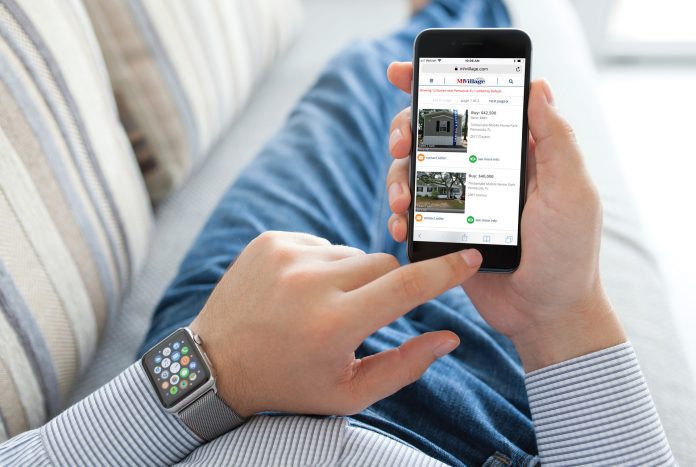Identify Simple Missteps, Make Them an Action Checklist to Improve Your Visibility Online
A dozen or more years ago, before I joined MHVillage, I was a partner in a consulting firm that was active in the manufactured housing industry. Among our clients, we worked on behalf of several manufacturers to coach their retailers and communities on successful marketing techniques.
In those days, we were doing several hundred consultations a year throughout the country. Many of the companies we visited already were very successful. They just were in need of some optimization in a few key areas. Others had more significant marketing challenges to overcome. But no matter where we traveled, my partners and I began to see a lot of the same mistakes. There was inadequate signage, poor business image, ineffective advertising, lack of prospect follow up… you get the idea.
The process of identifying these marketing missteps became a checklist that we would run through when we consulted with a new client.
Now I’ll be the first to admit that many of these things I’ve mentioned so far may seem pretty obvious. But that’s the point. We learned that even the best marketers often lose sight of the basics, and need a friendly reminder every now and then. Use these tips to improve your organic search results.
As it has been more than a few years since my consulting days, and it got me thinking. What would that list of marketing basics look like today?
We’re in a world dominated by the internet, mobile devices and social media. What are the things you should be focusing on in today’s environment of ever-changing technology?
Let’s take a look at a few marketing basics, updated for the digital age.
Is Your Website Mobile Friendly?

Have you ever noticed how websites look great whether you view them on your laptop, tablet or smartphone? That’s called responsive design, and it’s what enables a website to dynamically resize to provide the best possible user experience regardless of the device on which it is viewed.
In the old days, we would talk about the importance of having a good website. Now, the emphasis is on making sure your website is functional for the way customer will view it. In other words, from a mobile device.
According to the most recent data from Google, mobile searches make up more than 60 percent of internet searches. And that number is continuing to grow.
The concept of responsive design seems simple enough. But the solution is more than just updating your website with the latest WordPress theme. Are the fonts readable on a tiny 4.7-inch smartphone screen as well as on that giant tablet-sized phone? Is the navigation intuitive? Can the consumer easily fill out your contact form or application from a mobile device? According to research cited by web app developer, Mobify, 30 percent of mobile browsers will never return to a website if the experience is not optimized for mobile.
If you’d like to get some insights on how search engines view your website, Google “mobile friendly test” and you’ll find a link to a tool where you can enter your web address and get an analysis of your mobile readiness. It’s a great way to benchmark how search engines like Google are seeing your site.
Can Customers Find You Online?

Pretty much everyone, across every age group, uses the internet during a home search. Indeed, the latest statistics from Google show that internet usage is well over 90 percent among home potential homebuyers, and more than 60 percent of these searches are made from mobile devices.
In the early days of search engine optimization, it was relatively easy to show up in a top position. You’d stuff a web page with the keywords you’d want to target, like “mobile homes in Tuscaloosa”. If you were to repeat the phrase in the header and domain name, like magic you’d own the space. Well, the search engines got wise to that technique a long time ago. Now if you want to have a top position you need relevant content. Or open your wallet to search engine advertising. Most of the time, you have to do a little of both.
You may have noticed that when you search for something from your mobile device, a lot more comes up on your screen than ever. There are paid ads, local business listings, videos and social media pages, just to name a few items. In the past, your company may have been at the top of page one in Google with your organic search results. These were non-paid listings that show up when anyone does an internet search. If you’re fortunate enough to maintain that position, you’re still halfway down the page after everything Google puts in. And if you already were half way down the page, now you’re on page two or three where views drop exponentially.
Don’t worry, though. All is not lost.
Improve Your Visibility Online by Updating Those Important Listings
If you can’t beat them, join them. It may seem like the simple solution to do paid search advertising and buy your way to the top. But that can be an expensive proposition. Online advertising is becoming more competitive and costs are going up. This is especially true when a growing number of companies outside our industry are discovering that manufactured home keywords are great at driving traffic to their industries, too.
A better solution is to start by making sure you have an up-to-date and complete Google My Business listing for all of your locations. It’s a simple process. These local listings regularly appear ahead of organic search listings, most noticeably on mobile. They are particularly valuable when consumers do “near me” searches, which have grown by more than 140 percent on average, year over year.
Search engines place a lot of emphasis on these directory listings, as you can see by the priority Google places Google My Business listings, and other directory sites like Yelp, the Better Business Bureau and MHVillage. In many instances, a community or retailer listing on MHVillage is one of the first things that will show up in the organic search results.
Another reason to maintain your listing is because of the rise of digital assistants like Apple’s Siri, Amazon’s Alexa and Google’s Assistant. These assistants, whether on a mobile phone or a smart home device, use directories and information sources such as Yelp and Wikipedia to provide answers to consumer queries.
How’s Your Online Reputation?

Of course, visibility online is sometimes a double-edged sword. As you may have noticed, search engines like Google also put ratings and reviews next to search engine results. Not paying attention to your reputation online can be very costly.
We know that more than 75 percent of consumers base their purchase decisions on ratings and reviews. And, of course, people are far more likely to share a bad experience than a good one. There are many web-based software tools to help monitor reputation. Though, one of the best solutions is to simply put a program in place to encourage positive reviews.
Ask for Reviews and Testimonials to Improve Your Visibility Online
For example, if you look at the MHVillage professional blog landing page, you can see an example of this invitation to leave a review in the right sidebar. This tool guides the website visitor through the process of leaving a review for us on Google, Facebook and a bunch of other sites that are relevant to our business.
Of course another way to build your reputation online is simply to ask your customers.
As an MHVillage advertiser, you notice we ask for testimonials when homes are marked as sold. Responding promptly to the occasional negative review and proactively asking customers for reviews is a great way to stack the deck in your favor. And, this diminishes the impact negative reviews have when they do occur.
Even when it comes to the basics, attempting to keep up with technology can be a daunting task. However, the good news is that the marketing mix will continue to evolve. And our objectives will remain the same. That is, make it easy for your best prospects to find you. Earn their confidence and make them want to do business with you.










